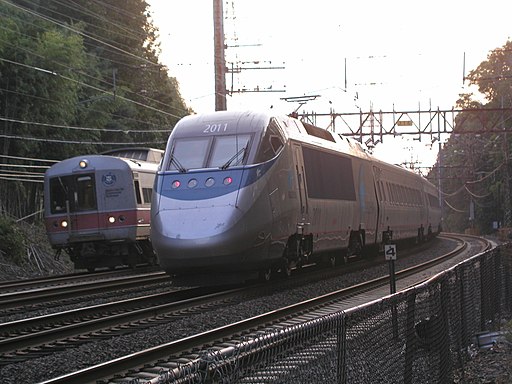Lake City Limited
Transportation in Madison, WI and the upper Midwest
Monday, February 2, 2015
Madison's Railroad History
Here's a cool piece on railroads and the growth of early Madison from yesterday's Capitol Times. More to come on our capitol city.
Tuesday, January 13, 2015
High Speed Dreams

Well engineered high speed rail systems, like Japan's Shinkansen and France's TGV, comfortably rocket between cities at 200mph. President Obama's High Speed Rail Initiative ultimately aspires to bring the newest technology to the United States, developing key routes into 220mph service. Many problems lie ahead.
Building high speed infrastructure represents a long term investment. Japan began their investment in 1964; France, in 1981. Evaluations proposing to update Amtrak's already quick Northeast Corridor line sound prohibitively expensive at an estimated $151 billion. An attempt to build on the national scale would require immense federal subsidies akin to Eisenhower's National Highway project.
In response to the high cost of such development and the ensuing debate, Phillip Longman made an excellent case in Washington Monthly for improved conventional rail service in the US.
As it happens, prevailing political winds have forced more gradual development: Modifying existing Amtrak lines to 110mph, as we discussed in a previous post.
At the moment, when freight rail is booming and funds are scarce, Amtrak needs consistency more than it needs bullet trains. Practical, low cost upgrades that improve the on-time rate of trains will provide a high return for a small investment. We can determine whether the system is serving us over time, and develop it accordingly.
Wednesday, December 24, 2014
The Varsity

While Madison is currently out of the loop in the Midwest Regional Rail Initiative, we did see some brief passenger service this year. Pullman Rail Journeys operated two trips between Chicago and Madison for Badger/Northwestern football games this October.
Dubbed The Varsity, the train is named for an old Milwaukee Road commuter line that served the same route decades ago, as superbly photographed by William D. Middleton.
While The Varsity is just an occasional excursion service, these trips help to promote rail as a transit option. They prove it can be a fun and relaxing journey between Chicago and Madison free from tolls and gridlock, giving us the glimpse of how a comprehensive mass commuter service can benefit both cities.
Monday, December 8, 2014
Amtrak
In the midst of all
the high speed rail talk, our current service has received little
attention. Amtrak has continued to operate under the radar. It has one
solid advantage over any new proposal: the tracks are in place, and the
trains are running. Slowly.
One
problem is that Amtrak owns very little trackage, for the most part
operating on freight railroad lines. Heavy freight traffic wears down
the rails and makes them unsafe for high speed service. And, while it is
federal law that Amtrak trains have the right of way over freight shipments,
passenger trains are often delayed for long periods on side tracks.
Consequently, Amtrak can only operate fast service on tracks they own,
most notably on the Northeast Corridor (Boston-New York-Washington
D.C.), where Acela service can reach 125mph. Outside of that line, most trains are limited to 79mph.
Is it possible to upgrade antiquated tracks and equipment
to speeds that would make train travel competitive, while still sharing
tracks with freight companies? New work to rebuild tracks in Michigan is under way, which will enable 110 mph service on Amtrak's Wolverine between Chicago and Detroit.
Similar upgrades have been completed in Illinois
between Chicago and St. Louis. The approach has been piecemeal, but the improvements to our existing lines can help Amtrak function expediently and efficiently, at a lower cost than
entirely new infrastructure.
Labels:
Rail
Tuesday, December 2, 2014
Options
Can we build public transportation that will adequately serve all our
citizens? This is a question that our state and local governments need
to ask themselves.
In their recent article in the Milwaukee Journal Sentinel, Jabril Faraj and Nino Amato expressed a feeling that many Wisconsonites no doubt share. Our public transit services are not meeting our needs. Across the Midwest, several groups are spearheading the effort to build new systems and upgrade old ones, but because of political gridlock Wisconsin remains in stasis.
Labels:
Development
Subscribe to:
Comments (Atom)